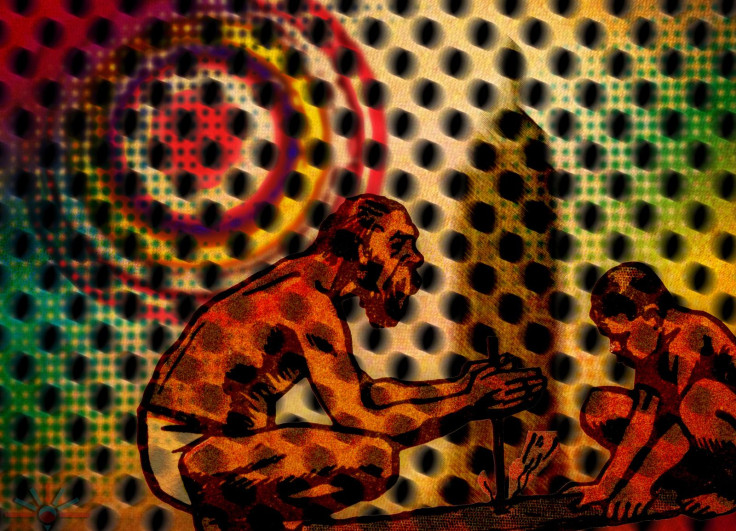Human Brain Adapts To Modern Problem-Solving With Skills Learned Through Evolution

If we know anything about the human brain, it’s that it can roll with the punches. The brain is an expert at adapting to an unfamiliar environment or set of circumstances — look at the resilience of PTSD sufferers who, through rehabilitative therapy, make full recoveries. Or consider the brain’s seemingly limitless capacity for language learning. Like a muscle, it gets stronger the more we use it.
But evolutionary psychologists are generally puzzled when they consider all our modern skill sets. How can such an old brain, which didn’t evolve to surf Facebook, swipe left on Tinder, or hold selfie sticks, perform these tasks with such little effort? They seem almost built-in to our neural wiring, even if they emerged only within the last decade. There must be something the brain isn’t telling us.
Three Kinds Of Repurposing
Thalia Wheatley and Carolyn Parkinson, social neuroscience researchers from Dartmouth College, recently went on a hunt for some clues. As they dug through the literature on human social intelligence — essentially our species’ ability to navigate the waters of socialization — they gradually distilled the theories about problem-solving into three categories. All three hinge on a recycling of old skills to fit new demands, which the co-authors officially call “repurposing.”
“This repurposing allows us to do a lot with a little,” said Wheatley in a university release. “Our brains have the flexibility to form new combinations of pre-existing computations and deploy these computations rapidly and flexibly in new contexts.”
The first is evolutionary repurposing. According to Wheatley and Parkinson, evolution makes use of “whatever is in the room.” In other words, it chips away at our skill sets in order to perfectly hone them for the environment in which we live. This happens over the span of lifetimes. Evolutionary repurposing is what eventually tied together the threads of physical closeness — how near or far away a person or object is from an observer — from emotional or social closeness. This appears to come from our brain’s own structure, which has evolved to process psychological dimensions, using language such as “close friend” and “distant relative,” in the same way it processes physical dimensions.
“Our mental lives consist not only of our immediate, first-hand experiences of the current environment but also of events occurring in other places, the experiences of other people, and thoughts about possible futures,” the authors wrote. With evolutionary repurposing, our brains can translate a year-long drought of conversation into a mental picture where people actually feel far away.
Tied in with that system of pattern recognition is the next form of repurposing, called cultural repurposing. You might think, looking at the apparent magic of speed reading or intricacies of jazz improvisation, that our brains have an underlying mechanism that can simply kick into high gear when we need it. But that doesn’t seem to be the case. “For example,” Parkinson said, “we did not evolve to read. Instead, a growing body of research suggests that we read by repurposing neural machinery that evolved to process faces and objects.” The same goes for other forms of cultural expression, which emerge according to a much shorter timeline than evolutionary repurposing and often fade just as quickly. The brain doesn’t have a need to encode each skill individually, so it co-opts other circuitry in its place.
Even more rapidly changing is the final form of repurposing, which is called instrumental repurposing and happens moment by moment. On paper, a laundry list of facts and figures may build a compelling case for people to donate to charity, but our brains don’t seem to respond well to raw data. Millions of years spent living in small, tight-knit tribes have cemented human faces as a much stronger trigger for emotional response. This partly explains why the fights against major causes of death, such as global hunger and HIV/AIDS, rely on skeletal, wide-eyed children to get their point across, not faceless statistics.
Solving The World’s Problems
While evolutionary and cultural repurposing are useful for understanding the brain’s neural framework, this instrumental repurposing may offer the most help to the greatest number of people. It can change the message, which means it can change people’s reaction to the message and compel them to act. And that strategy can then be applied on a much larger scale, for a greater number of causes.
“By imitating the types of problems that our brains evolved to solve we can instrumentally evoke evolved responses to address the problems that characterize today’s world,” the authors wrote. And more broadly, “we can begin to more effectively shape our own and other’s behavior in response to the myriad modern problems that our brains did not evolve to solve.”
Source: Parkinson C, Wheatley T. The Repurposed Social Brain. Trends in Cognitive Sciences. 2015.



























